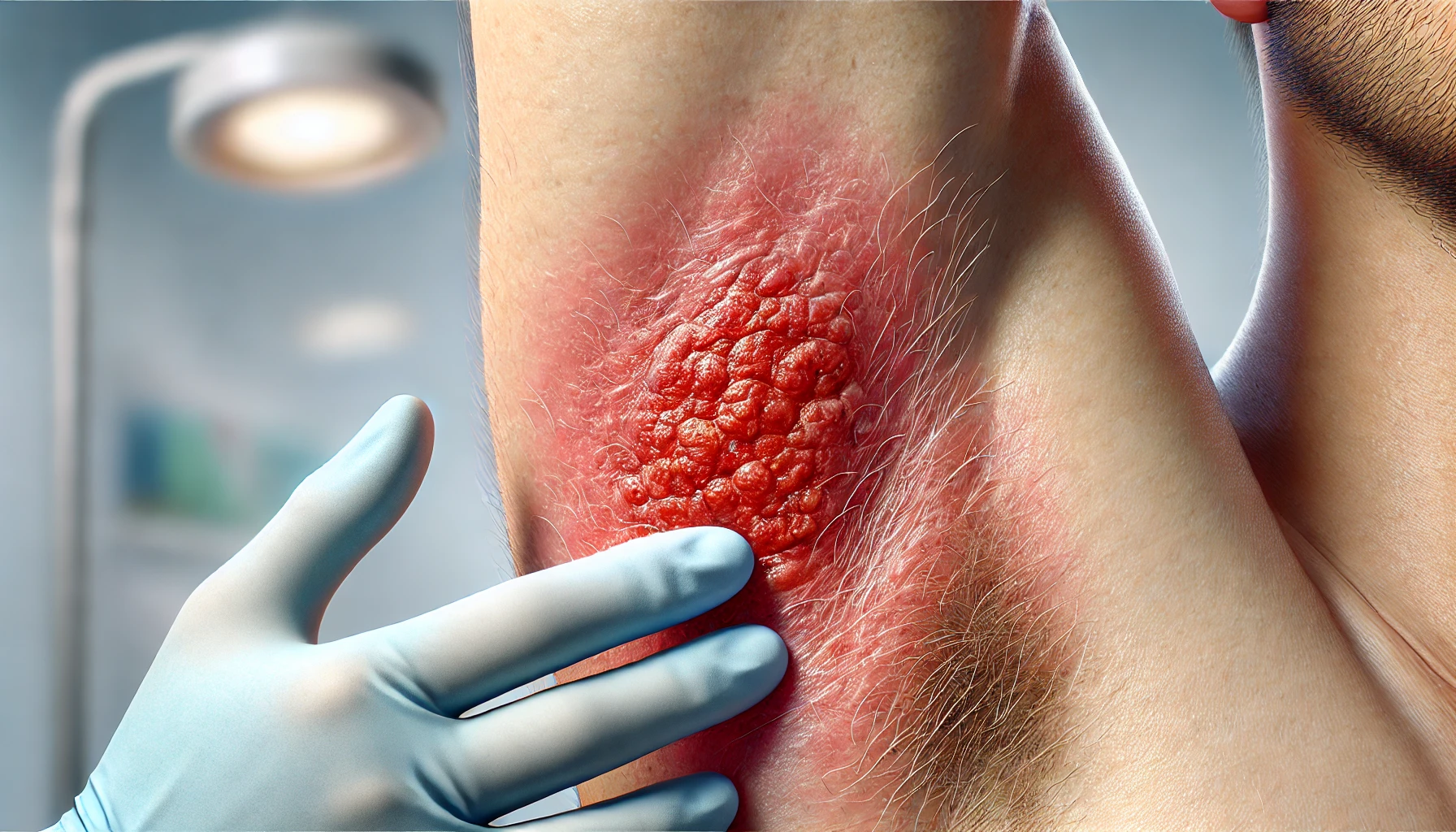Health Notice: This article was written using the Consensus AI Academic Search Engine. It is intended solely for informational purposes and should not be considered medical advice. Always consult a licensed healthcare provider for diagnosis, treatment, or medical guidance. Please refer to the full Disclaimer at the end of this article.
Understanding Yeast Infection Skin Rash
Yeast infections on the skin, often caused by the Candida species, present distinct characteristics that can help in their identification and management. This article explores the appearance and implications of yeast infection skin rashes, particularly in the context of incontinence-associated dermatitis and seborrheic dermatitis.
Appearance of Yeast Infection Skin Rash
Yeast infection skin rashes typically manifest as red, itchy, and inflamed areas on the skin. In the case of incontinence-associated dermatitis (IAD), these rashes are often described as “fungal-appearing” and can be prevalent in areas exposed to moisture, such as those affected by urine or feces. The rash may appear as erythematous (red) and scaly lesions, which are common indicators of fungal colonization by Candida spp.1.
Factors Contributing to Yeast Infection Rashes
Several factors contribute to the development of yeast infection rashes. In the context of IAD, prolonged exposure to moisture and irritants like urine and feces can compromise the skin barrier, making it more susceptible to fungal colonization. The study on IAD patients showed that Candida spp. was cultivated in a significant number of cases, indicating its role in the development of these rashes1.
In seborrheic dermatitis, the yeast Malassezia is a key pathogenic driver. This condition is characterized by erythematous and scaly lesions, particularly in areas with high sebaceous gland activity, such as the face. The presence of Malassezia, along with increased Staphylococcus abundances and barrier dysfunction, contributes to the inflammatory nature of the rash2.
Treatment and Management
Effective management of yeast infection skin rashes involves addressing the underlying fungal colonization and restoring skin barrier function. In the case of IAD, the use of camphorated oil has been shown to significantly reduce the severity of the disease and decrease fungal colonization, proving superior to routine skin care products1.
For seborrheic dermatitis, treatments like ketoconazole have been effective in reducing disease severity by decreasing Malassezia abundances and restoring skin barrier function. Although the antimicrobial peptide omiganan was evaluated, it did not show significant clinical improvement compared to ketoconazole2.
Conclusion
Yeast infection skin rashes, often caused by Candida and Malassezia species, present as red, itchy, and scaly lesions. These rashes are influenced by factors such as moisture exposure and skin barrier dysfunction. Effective treatments, such as camphorated oil for IAD and ketoconazole for seborrheic dermatitis, can significantly reduce the severity of these rashes by targeting the underlying fungal colonization and restoring skin health.
Disclaimer
The content in this blog post was generated using Consensus, an AI-powered academic search engine, and is based on publicly available scientific literature. While we strive to provide accurate, up-to-date, and well-researched information, this content is intended for informational and educational purposes only.
It does not constitute medical advice, diagnosis, or treatment. Always consult a qualified healthcare professional before making decisions related to any medical condition, treatment, or medication.
The AI system’s analysis may not account for all perspectives, ongoing research, or individual circumstances, and should not replace professional expertise. Neither the blog publisher nor the developers of the Consensus AI tool are liable for any decisions or actions taken based on this content.
Use of this information is at your own risk. Where provided, citations link to original scientific studies for reference only—these should be reviewed independently and interpreted with the support of a qualified medical or research professional.
If you are experiencing a medical emergency, please seek immediate care from a healthcare provider or call emergency services.
